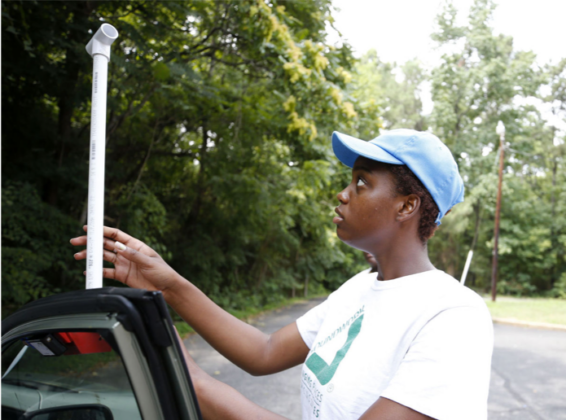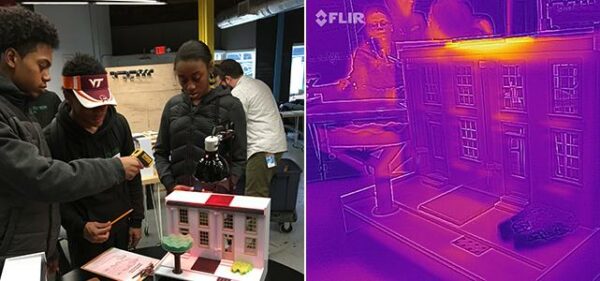While all trees add beauty to urban neighborhoods, their real superpower is in the invisible climate, health, and economic benefits they provide—improving air quality, reducing flooding, and cooling neighborhoods. Think back to your last stroll on a scorching summer day. That refreshing relief you get under the shade of a tree isn’t just wishful thinking—average temperatures under a mature shade tree can be over 10°F cooler than direct sunlight. This difference isn’t just a nice-to-have; it’s essential. Expanding the tree canopy means more outdoor activity, safer commutes, better working conditions, lower cooling costs, and so much more.

Illuminating the benefits of trees through stories and data is key to ensuring they are planted, maintained, and stewarded into the future. Community science is a powerful way to involve residents in this mission. Like citizen science, community science provides residents with the tools to collect hyper-local impact data, such as using FLIR cameras to detect heat patterns and capture cooling benefits. Community science goes further by having residents identify the questions they wish to explore and interpret the data themselves, leading to a deeper understanding of the benefits of green infrastructure.

Having led community science efforts for nearly a decade, we’ve seen the power of these programs firsthand. In 2018, the “Throwing Shade in RVA” project created an opportunity for Groundwork RVA’s Green Team to map temperature variations across Richmond, Virginia. Using handmade devices, they discovered temperature differences of up to 16°F on the same day along popular transit routes. Their findings, also using FLIR cameras, showed that adding nature could effectively mitigate heat challenges. Armed with their data, Green Teamers advocated for greening investments for their neighborhood in the Richmond 300 plan. Groundwork RVA and community partners have since used this data to guide the planting and stewardship of hundreds of trees in the city’s most heat-vulnerable areas.

The historic $1.5 billion funding for urban forestry presents an opportunity to combat extreme heat nationwide. Over 40% of projects will directly tackle extreme heat. However, all projects, like those to improve air or water quality, will have co-benefits in reducing heat. With support from the USDA IRA Urban and Community Forestry program, Groundwork Trusts will collaborate with hundreds of young people and community leaders to replicate the success of community science efforts and raise awareness about the benefits of expanding and stewarding the urban tree canopy. By integrating community efforts, we can champion the benefits of trees and create a cooler, more equitable future for urban neighborhoods.
